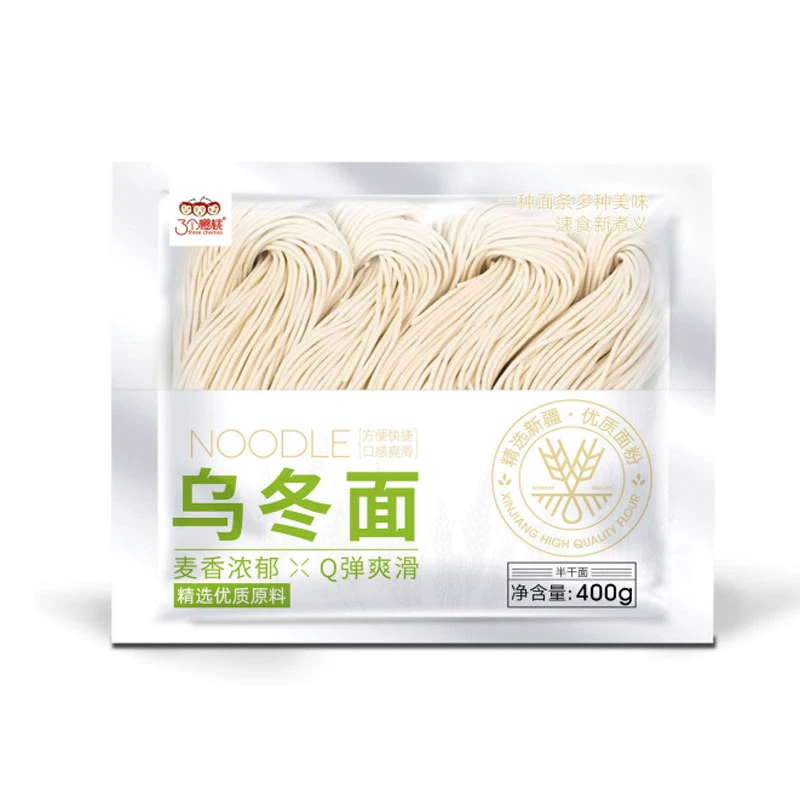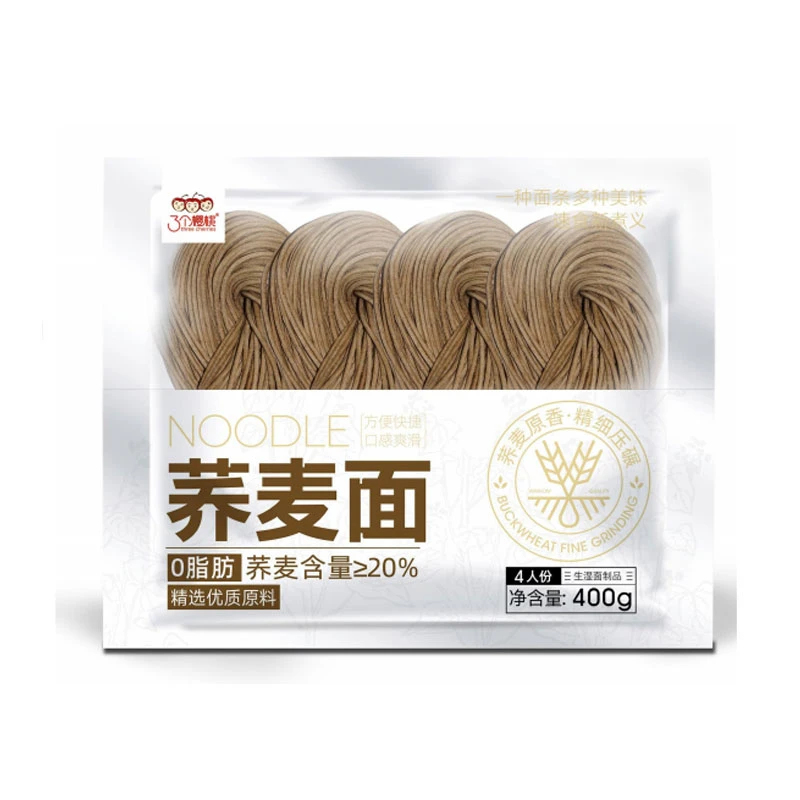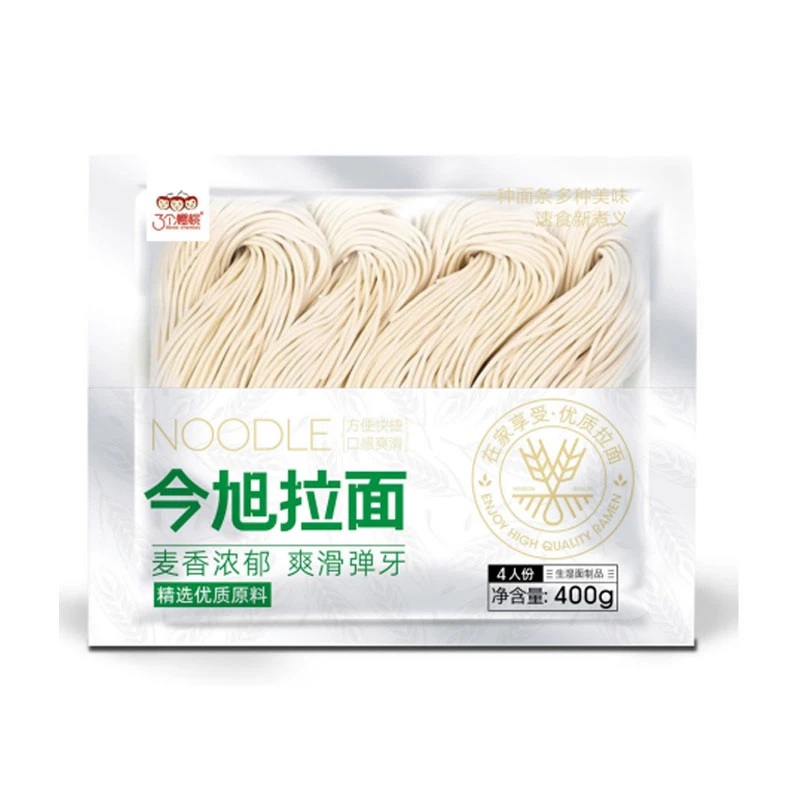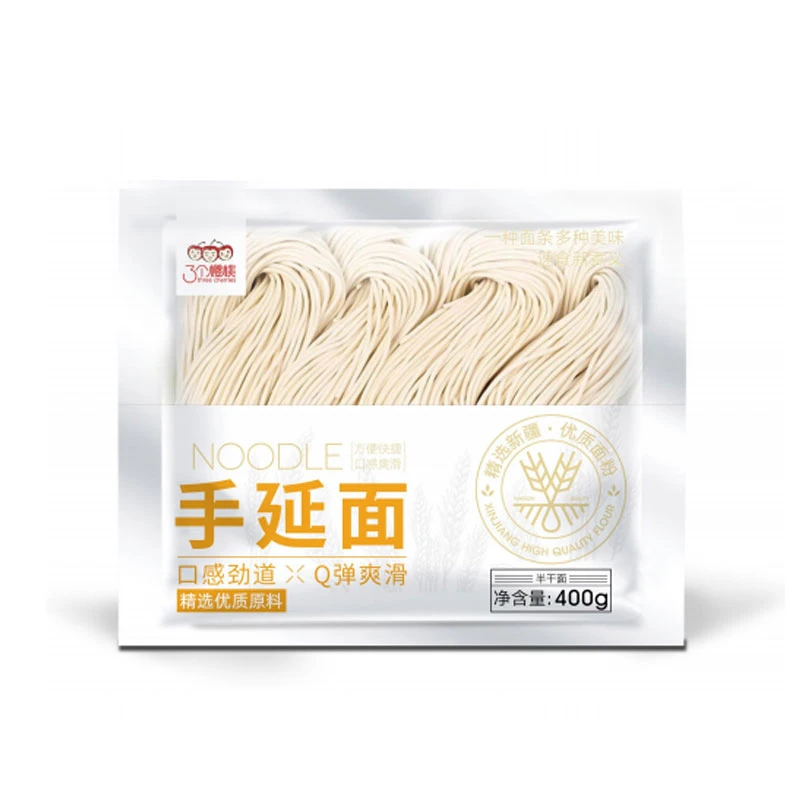Low GI Soba Noodles: Healthy & Delicious Buckwheat Pasta
The Rising Tide of Conscious Nutrition: Industry Trends
The global wellness market is undergoing a significant transformation. Consumers are no longer just counting calories; they're scrutinizing the quality and functional benefits of their food. A 2023 report by Grand View Research valued the global functional food market at USD 207.6 billion, projecting a CAGR of 8.5% from 2023 to 2030. This growth is fueled by an increasing awareness of diet-related health issues, particularly the management of blood sugar levels. Foods with a low Glycemic Index (GI) are at the forefront of this trend. The demand for products like Low GI70 soba is surging, driven by health-conscious millennials, individuals managing diabetes, athletes seeking sustained energy, and families aiming for healthier meal options. Our product directly addresses this market need, offering a delicious, versatile, and scientifically-backed solution.

This paradigm shift emphasizes transparency, clean labels, and proven health benefits. Consumers demand to know not just *what* is in their food, but *how* it's made and *why* it's good for them. Our commitment to EEAT (Experience, Expertise, Authoritativeness, Trustworthiness) principles is reflected in every strand of our Low GI70 soba, from ingredient sourcing to our state-of-the-art manufacturing process.
Unveiling the Excellence: Technical Specifications of Low GI70 Soba
The superior quality of our Low GI70 soba is not a matter of chance, but a result of precise formulation and rigorous quality control. The technical parameters below illustrate why our product stands apart in the market. The term "GI" refers to the Glycemic Index, a scale from 0 to 100 that ranks carbohydrate-containing foods by how much they raise blood glucose levels. Foods with a GI of 55 or less are considered low-GI and are preferred for better blood sugar management.
| Parameter | Specification | Significance & Benefit |
|---|---|---|
| Glycemic Index (GI) Value | 54 (Clinically Tested Low GI) | Minimizes blood sugar spikes, promotes stable energy, ideal for diabetics and weight management. Complies with low-GI food standards defined by international bodies like the Glycemic Index Foundation. |
| Primary Ingredients | Premium Buckwheat Flour, Whole Wheat Flour, Patented Resistant Starch Blend, Purified Water, Sea Salt | High-quality, non-GMO ingredients. Buckwheat provides protein and minerals. Resistant starch acts as a prebiotic fiber, further lowering the GI. |
| Protein Content | Approx. 15g per 100g serving | Supports muscle maintenance and satiety, making you feel fuller for longer. Higher than many traditional pasta options. |
| Dietary Fiber Content | Approx. 8g per 100g serving | Aids in digestion, promotes gut health, and contributes to the low GI value by slowing sugar absorption. |
| Resistant Starch | Approx. 5g per 100g serving | This key component bypasses digestion in the small intestine, feeding beneficial gut bacteria and significantly reducing the glycemic response. |
| Sodium Content | A controlled sodium level to support cardiovascular health, aligning with dietary guidelines from the American Heart Association (AHA). | |
| Shelf Life | 12 Months from Date of Manufacture | Achieved through advanced semi-dry and pasteurization technology, ensuring freshness without artificial preservatives. |
| Certifications | ISO 22000, HACCP, FDA Registered Facility | Commitment to the highest international standards of food safety and quality management. |
The Science of Slow Release: The Manufacturing Process
The creation of Low GI70 soba is a meticulous journey that blends ancient noodle-making artistry with modern food science. Unlike simple mixing and drying, our proprietary process is designed to maximize the formation of resistant starch and preserve the nutritional integrity of the ingredients. This is not casting or forging metal; it is a delicate food engineering process where every step is critical to achieving the desired low-GI outcome.
High-protein buckwheat flour, whole wheat flour, and our patented resistant starch formula are blended in precise, computer-controlled ratios. Water temperature and volume are strictly monitored to ensure optimal dough hydration.
The mixture is kneaded under a vacuum to create a dense, air-bubble-free dough. This enhances the noodle's texture ('al dente' bite) and creates a more robust starch structure, which is crucial for a low GI rating.
The dough sheet is passed through a series of rollers to achieve the perfect thickness. Between rolling stages, the dough is allowed to "age" in a climate-controlled environment. This step is vital for gluten development and starch retrogradation, a key process in forming resistant starch.

The aged sheets are cut into fine soba strands. The noodles then pass through a multi-temperature steaming tunnel. This controlled cooking process gelatinizes the starches before a rapid cooling phase initiates further retrogradation, locking in the low-GI properties.
The noodles are carefully semi-dried to the perfect moisture level for extended shelf life and ideal texture. They are then packaged in a modified atmosphere packaging (MAP) to maintain freshness and safety.
Packaged products undergo a final pasteurization step for safety. Each batch is then subjected to rigorous quality control, including GI testing, microbial analysis, and sensory evaluation, ensuring it meets ISO 22000 and HACCP standards.
Visualizing the Advantage: Data-Driven Comparisons
Numbers speak louder than words. To truly understand the benefits of Low GI70 soba, it's essential to see how it stacks up against common carbohydrate sources. The data below clearly illustrates its superior profile for health-conscious consumers.
Glycemic Index (GI) Comparison
Data sourced from University of Sydney's GI Database and internal testing. Lower GI values are better for blood sugar management.
Simulated Blood Sugar Response Over 120 Minutes
Schematic representation. The Low GI70 soba leads to a much gentler, more sustained rise and fall in blood glucose compared to a typical high-GI food.
Applications & Technical Advantages
The unique properties of Low GI70 soba make it a versatile and highly beneficial ingredient across a wide range of applications, moving beyond the home kitchen into specialized and commercial settings.
For Individuals with Diabetes
Advantage: Superior glycemic control. The low GI value of 54 ensures a slow release of glucose into the bloodstream, helping to prevent dangerous post-meal hyperglycemia. This makes it a safe and enjoyable carbohydrate choice, endorsed by nutritionists for diabetic meal planning.
For Weight Management
Advantage: Enhanced Satiety. The high protein and fiber content, particularly the resistant starch, promotes a feeling of fullness. This helps reduce overall calorie intake by curbing cravings and preventing overeating. It's a key tool for sustainable weight loss or maintenance.
For Athletes & Active Lifestyles
Advantage: Sustained Energy Release. Unlike simple sugars that cause an energy "crash," our soba provides a steady stream of fuel. This is ideal for endurance athletes who need consistent energy levels for prolonged performance and for anyone seeking to avoid the mid-day slump.
For Health-Focused Restaurants & Cafes
Advantage: Premium, Healthy Menu Offering. Restaurants can cater to the growing demand for healthy, functional foods. Our Low GI70 soba allows chefs to create premium dishes that are both delicious and verifiably healthy, attracting a discerning clientele.
For Corporate Wellness Programs
Advantage: Aiding Employee Health. Companies can incorporate our soba into their cafeterias to promote better employee health, potentially leading to increased productivity and reduced healthcare costs. It’s a simple switch with a significant impact.
For Institutional Catering (Hospitals, Senior Care)
Advantage: A nutritionally sound choice for sensitive populations. The gentle impact on blood sugar and high digestibility make it an excellent option for patient meals and senior nutrition plans, meeting strict dietary requirements.
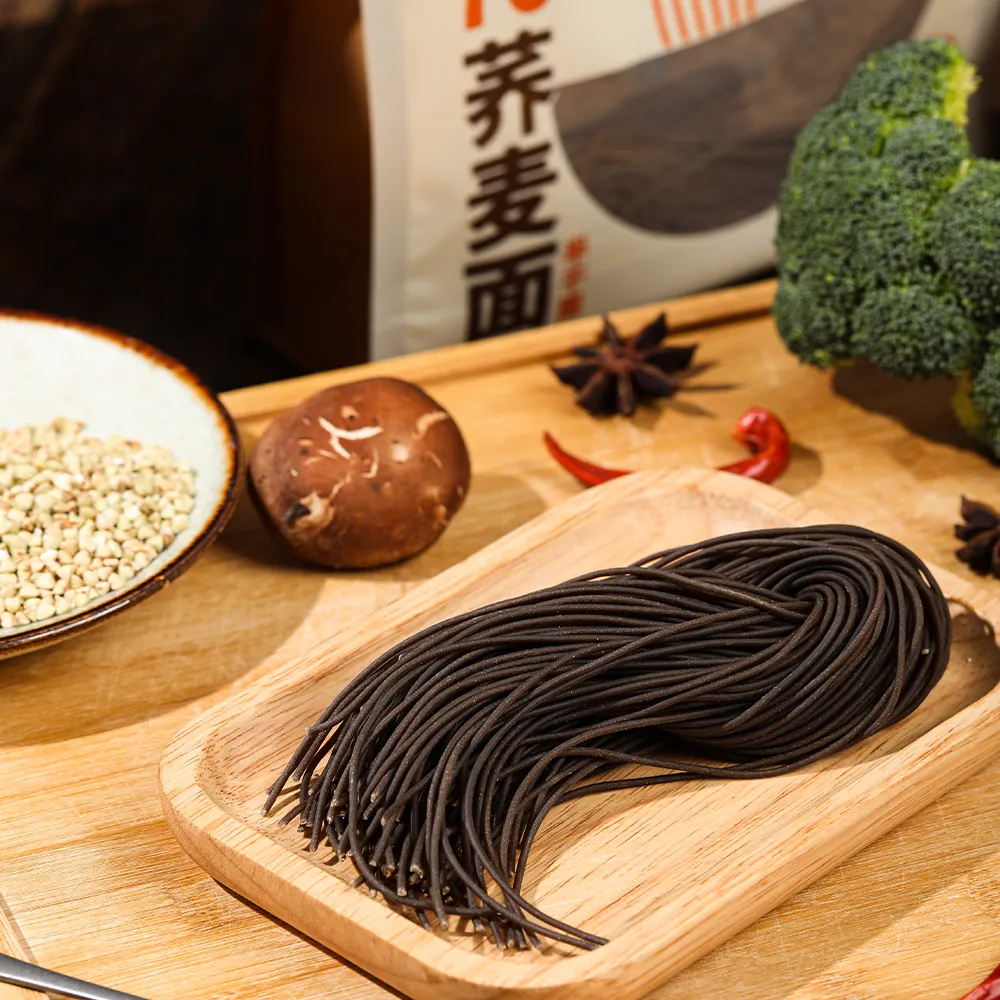
Manufacturer Comparison: Why Choose Us?
In the growing market of healthy noodles, not all products are created equal. Many claim to be "healthy" or "whole grain," but lack the scientific formulation and rigorous testing that defines a true low-GI product. Here's how we compare to standard soba manufacturers and other health noodle brands.
| Feature | Our Low GI70 Soba | Standard Soba Brands | Generic "Health" Noodles |
|---|---|---|---|
| GI Value | Clinically tested & certified Low GI (54) | Variable, often medium-to-high GI (60-70+) | Usually not tested or claimed |
| Key Technology | Patented resistant starch blend, starch retrogradation process | Traditional mixing and drying | May use whole grains, but lacks specific GI-lowering tech |
| Transparency | Full nutritional data, process explanation, certifications (ISO, HACCP) | Basic nutritional panel | Vague health claims, minimal data |
| Protein & Fiber | High (Approx. 15g protein, 8g fiber) | Moderate (Approx. 12g protein, 5g fiber) | Variable, often not significantly higher than standard |
| Target Application | Medical nutrition, athletic performance, premium wellness | General consumer market | General health-conscious consumer |
| Quality Assurance | Batch-wise GI testing, multi-point quality control | Standard food safety checks | Standard food safety checks |
Customized Solutions & Partnership Opportunities
We understand that different markets have unique needs. Beyond our standard retail product, we offer comprehensive B2B solutions and customization options for our Low GI70 soba.
For Food Service & Restaurant Chains:
We can provide bulk packaging options tailored to kitchen workflows. We also offer co-branded menu development support with our in-house nutritionists to help you effectively communicate the health benefits to your customers.
For Private Label & Retail Brands:
Partner with us to launch your own brand of low-GI noodles. We offer a full-service private label program, from custom packaging design to formulation adjustments (e.g., adding specific micronutrients, adjusting noodle thickness). Leverage our expertise and certified facility to bring a premium product to market quickly.
For Health & Wellness Companies:
Integrate our Low GI70 soba into your dietary plans or meal kit services. We can collaborate on developing specialized products that align with your wellness philosophy, providing a trusted and effective food component for your clients.
Real-World Impact: Application Case Studies & Testimonials
"Integrating the Low GI70 soba into our cafe menu was a game-changer. We've seen a 30% increase in lunch sales from the local corporate offices. Customers rave about the 'clean energy' they feel all afternoon. Their B2B support and reliable delivery have made them an invaluable partner."
Case Study 1: Aiding a Regional Diabetes Wellness Center
- Client: Midwest Diabetes & Nutrition Center
- Challenge: Patients struggled to find enjoyable, staple foods that wouldn't spike their blood sugar. Compliance with dietary recommendations was low.
- Solution: We provided the center with our Low GI70 soba for their cooking classes and meal plans. Our nutritionists conducted a workshop for their staff on the science of low-GI eating.
- Outcome: The center reported a significant improvement in patient engagement and dietary adherence. Patients felt empowered with a versatile food they could enjoy without fear. The center now retails the product directly to patients.
Case Study 2: Fueling a Professional Cycling Team
- Client: Apex Endurance Pro Cycling Team
- Challenge: The team needed a pre-race meal that provided long-lasting energy without the gastrointestinal distress or "bonking" associated with simple carbs.
- Solution: We worked with the team's sports nutritionist to incorporate Low GI70 soba into their carbohydrate-loading protocols.
- Outcome: Riders reported more stable energy levels throughout long races and a noticeable reduction in performance drop-offs. The soba became a staple in their nutrition strategy, praised for its effectiveness and palatability.
Your Questions, Answered: Professional FAQ
It's a combination of three key factors. First, the use of high-quality buckwheat, which naturally has a better GI profile than refined wheat. Second, our proprietary formulation includes a significant amount of resistant starch, a type of fiber that is not digested in the small intestine and thus does not raise blood glucose. Third, our specialized manufacturing process, involving controlled steaming and cooling (starch retrogradation), physically alters the starch structure to make it more resistant to digestion. This synergy results in the certified low GI value of 54.
No, our current formulation is not gluten-free. While buckwheat itself is gluten-free, our Low GI70 soba contains whole wheat flour to achieve the desired texture and protein structure. The presence of wheat means it contains gluten and is not suitable for individuals with Celiac disease or a high gluten sensitivity. We are, however, actively researching a gluten-free low-GI noodle in our R&D lab.
For optimal results, bring a large pot of water to a rolling boil. Add the soba and cook for 5-6 minutes for an 'al dente' texture. Do not overcook. Overcooking can break down the starch structure slightly, which may marginally increase the GI. For cold soba dishes, rinse immediately under cold water after draining to stop the cooking process. For hot dishes, drain and add directly to your broth or sauce.
Our semi-dry process is a technological advantage. Fully dry noodles can be brittle and take longer to cook. Fresh noodles have a very short shelf life and require refrigeration. Our semi-dry noodles have a moisture content between fresh and dry. This gives them a superior, more "fresh-like" texture and a much faster cooking time than dry noodles, while our pasteurization process provides a long shelf life of 12 months at room temperature without preservatives.
Absolutely not. Our Low GI70 soba is a clean-label product. The ingredient list is simple: Premium Buckwheat Flour, Whole Wheat Flour, Resistant Starch, Purified Water, and Sea Salt. The extended shelf life is achieved through our advanced semi-drying and thermal pasteurization process, not through the use of chemical preservatives.
Our manufacturing facility operates under the strictest international standards. We are certified for ISO 22000 (a comprehensive food safety management system) and HACCP (Hazard Analysis and Critical Control Points). Our facility is also registered with the U.S. FDA. These certifications demonstrate our unwavering commitment to producing safe, high-quality food products and ensure full traceability from raw material to finished product.
For standard orders, our typical lead time is 7-15 business days, depending on your location. For custom or bulk B2B orders, the timeline will be established in our service agreement. We stand by our quality with a 100% satisfaction guarantee. If any product does not meet the specifications or arrives in a defective condition, we will provide a full replacement or refund upon verification. Our customer support team is available to ensure a seamless experience.
References & Further Reading
Our claims are supported by a large body of scientific research into the health benefits of low-glycemic diets and functional ingredients like resistant starch. We encourage you to explore these authoritative sources:
- Jenkins, D. J., et al. (1981). "Glycemic index of foods: a physiological basis for carbohydrate exchange." The American Journal of Clinical Nutrition, 34(3), 362-366. View Article
- Birt, D. F., et al. (2013). "Resistant Starch: Promise for Improving Human Health." Advances in Nutrition, 4(6), 587-601. View Article
- The University of Sydney, Glycemic Index Database. A comprehensive and searchable database of GI values for foods worldwide. Visit Website
-
Unleash Your Inner Chef with Delectable Italian Pasta CreationsNewsAug.01,2025
-
Savor Health and Flavor: Irresistible Soba Noodles for Sale Await!NewsAug.01,2025
-
Nourish Your Body with Premium Organic Ramen - A Culinary Delight AwaitsNewsAug.01,2025
-
Elevate Your Dishes with Our Exquisite Kinds of Egg NoodlesNewsAug.01,2025
-
Dive into Flavorful Convenience with Our Ramen OfferingsNewsAug.01,2025
-
Discover Exquisite Types of Naengmyeon and Chilled Soba NoodlesNewsAug.01,2025
-
Is Whole Wheat Pasta Healthy?NewsMay.30,2025
Browse qua the following product new the we













































































































